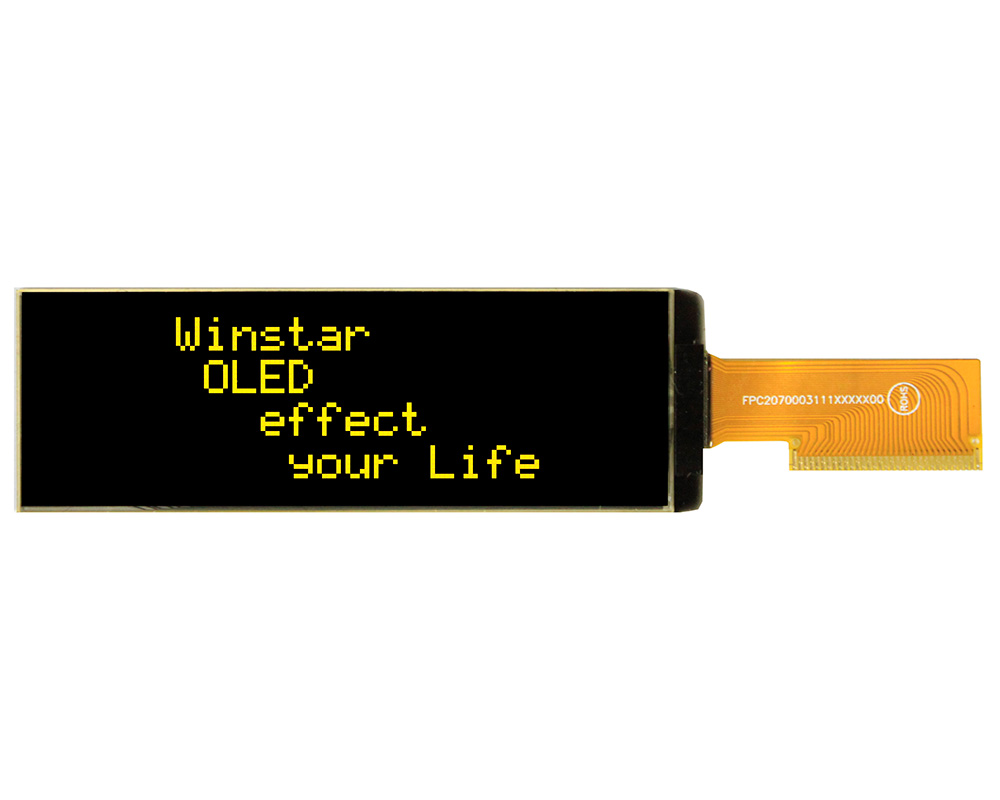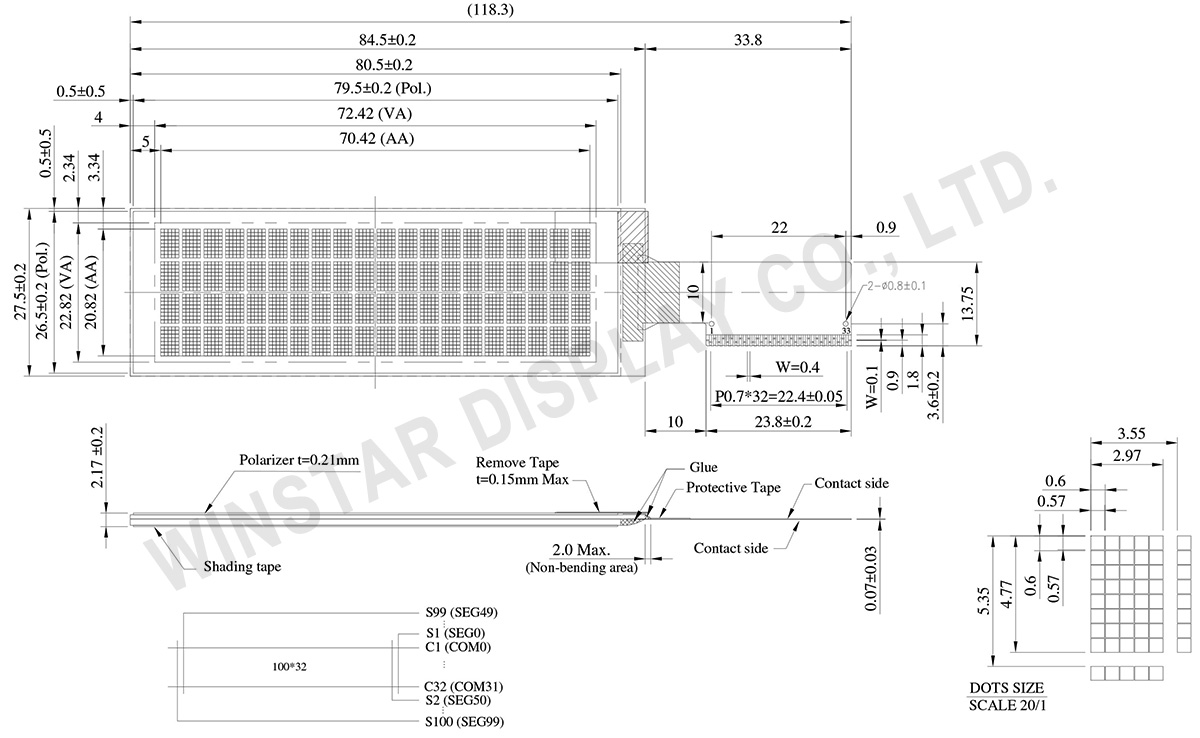Il modulo OLED 20x4 COG SSD1311 (modello: WEO002004C) presenta un design COG (Chip On Glass), offrendo una soluzione di visualizzazione ad alte prestazioni e affidabile. Questo modulo OLED SSD1311 è rinomato per la sua eccellente qualità di visualizzazione e durata, rendendolo ideale per una varietà di applicazioni.
Le dimensioni del modulo sono 84,5 x 27,5 mm con uno spessore di 2,17 mm, e l'area attiva è di 70,42 x 20,82 mm, con una dimensione diagonale di 2,89 pollici. Dotato di un circuito integrato driver SSD1311, il WEO002004C supporta un set di caratteri integrati, inclusi caratteri ASCII, inglesi, europei e giapponesi. Ogni carattere è composto da 5x8 pixel, garantendo una rappresentazione testuale dettagliata e chiara.
Il modulo visualizza 4 righe, con ogni riga capace di mostrare 20 caratteri. Grazie alla natura autoemissiva della tecnologia OLED, questo modulo non richiede retroilluminazione, risultando in un design più leggero e sottile con un rapporto di contrasto migliorato di 10.000:1. Inoltre, presenta un angolo di visualizzazione ultra-ampio fino a 175 gradi, garantendo una qualità di visualizzazione consistente da vari angoli. Il modulo offre anche un basso consumo energetico e un ampio intervallo di temperature operative, dimostrando la sua versatilità.
L'intervallo di temperatura operativa del WEO002004C è compreso tra -40°C e +80°C, con un intervallo di temperatura di stoccaggio tra -40°C e +85°C, permettendo prestazioni stabili in condizioni estreme. Il modulo opera all'interno di un intervallo di tensione logica da 2,4V a 3,3V, con un valore tipico di 3V, e utilizza un metodo di guida a 1/32 Duty.
Inoltre, il WEO002004C supporta più opzioni di interfaccia, inclusi interfacce parallele a 8 bit 6800/8080 e interfacce seriali I2C/SPI, offrendo connettività flessibile per soddisfare diverse esigenze di sistema. La serie di moduli offre anche varie opzioni di circuiti stampati flessibili (FPC) per soddisfare le diverse esigenze dei clienti.
Con la sua qualità di visualizzazione affidabile, un ampio intervallo di temperature operative e opzioni di interfaccia flessibili, il modulo OLED WEO002004C con circuito integrato driver SSD1311 è un'alternativa pratica ai moduli LCD tradizionali. Si consiglia di considerare questo modulo OLED 20x4 per migliorare le prestazioni di visualizzazione del vostro prodotto, ottenendo una qualità di visualizzazione superiore e un minor consumo energetico.
 Opzioni FPC
Opzioni FPC








